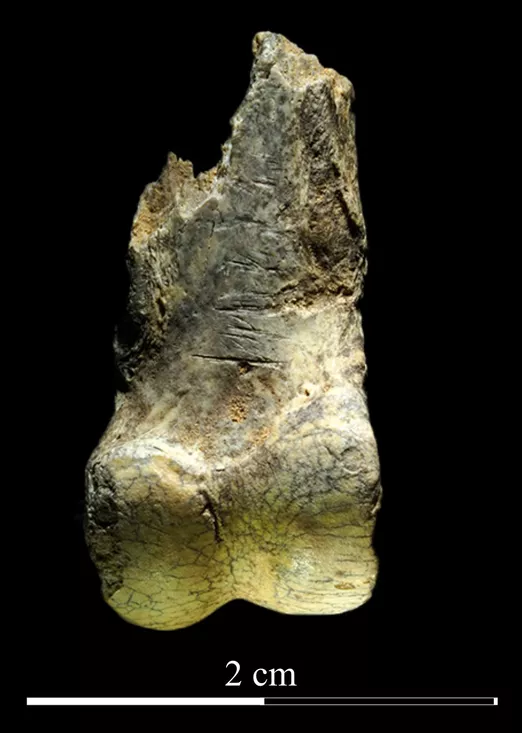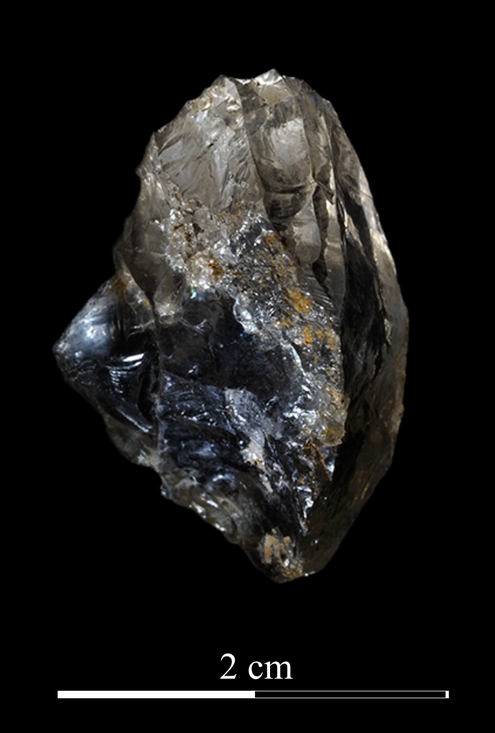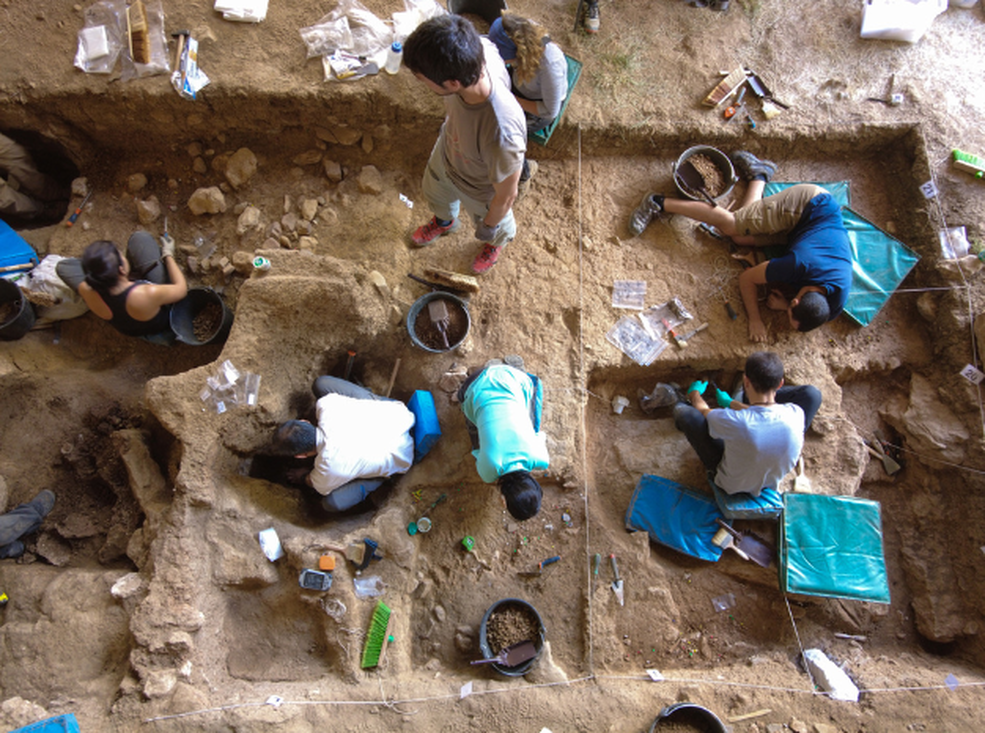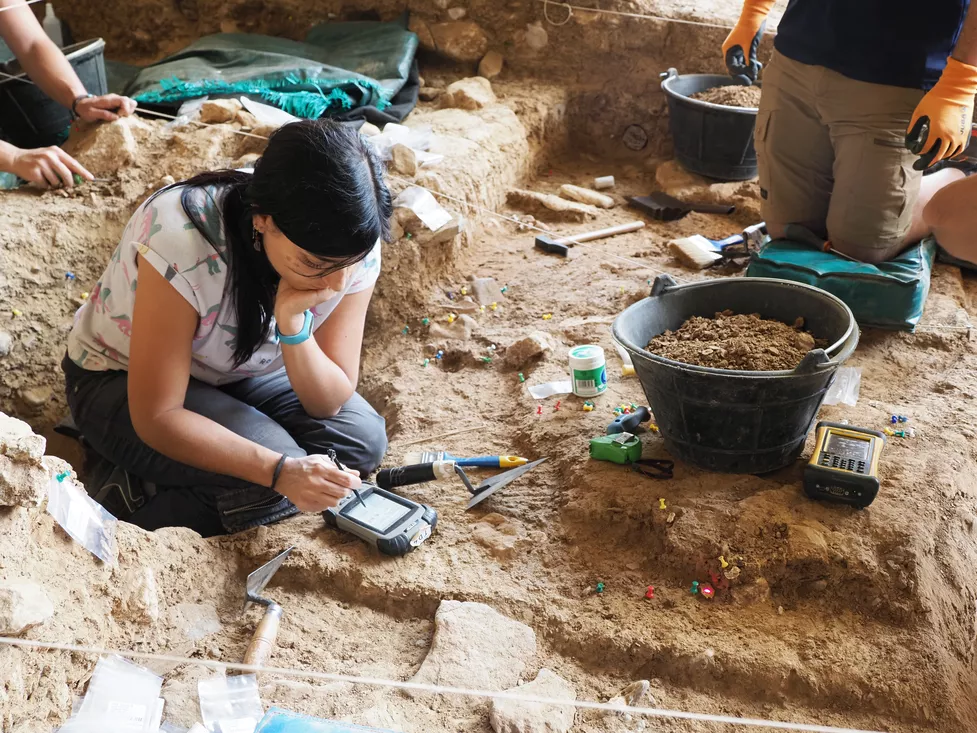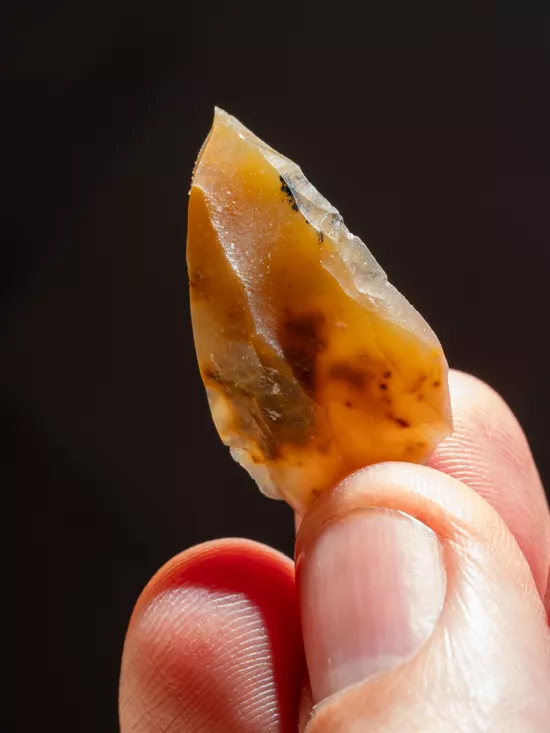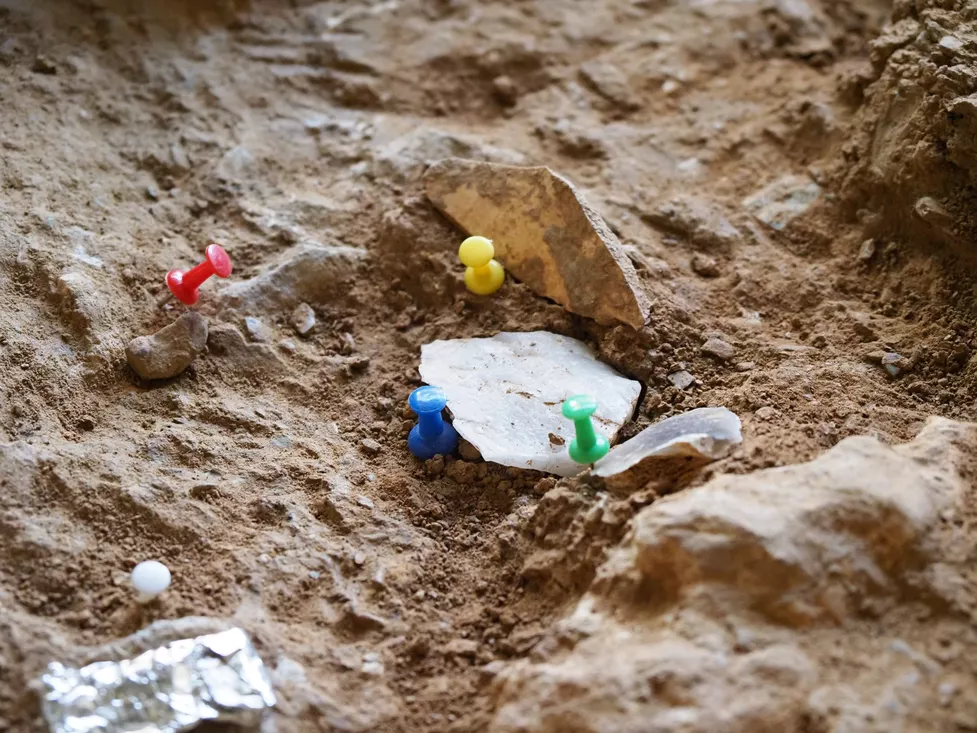NOBODY'S LAND? THE OLDEST EVIDENCE OF SETTLEMENT OF EARLY MODERN HUMANS IN THE CENTRAL IBERIA
An international team publishes in Science Advances the discovery of Abrigo de la Malia, a site in the heart of the Iberian Peninsula with evidence of the presence of modern humans between 36,000 and 31,000 years ago
Until now, the center of the Iberian Peninsula was considered an uninhabited place during the first millennia of the Upper Paleolithic This discovery fills a gap and challenges the idea that early Homo sapiens were limited in their ability to inhabit inh
One of the most fascinating periods of prehistory is the transition between the demise of Neandertals and the settlement of the territory by anatomically modern humans (AMH) (Homo sapiens). In some regions of Eurasia, the coexistence in time and space of these two species has been documented, while in other places, there seems to have been a hiatus, that is, a period in which no human being occupied the territory, a nobody's land. The factors that determined both scenarios were probably influenced by the availability of resources, conditioned by climatic factors, or the presence of geographical or ecological barriers
The Iberian Peninsula is a key region in human evolution, as it is located at the southwestern end of the European territory, which served as a refuge for Paleolithic populations. However, its diverse topography and ecology likely resulted in uneven settlement. Iberia contains a rich archaeological record from this crucial period of prehistory and has numerous sites corresponding to the first millennia of the AMH occupation, especially in the Cantabrian region but also with some records on the Atlantic and Mediterranean coasts. This population used a type of lithic technology, framed within the Upper Paleolithic, known as the Aurignacian, which developed in Europe approximately between 40,000 and 30,000 years ago.
The landscape in the central peninsula contrasts radically with coastal regions since, until now, no evidences of human presence had been recovered from the time when Neandertals migrated to the coast 42,000 years ago until the first records of the Upper Paleolithic 27,000 years ago, already framed in a more modern chrono-cultural period that we call the Gravettian. Therefore, it was considered that for approximately 15,000 years, the central Iberia was an inhospitable and uninhabitable place for the early populations of Homo sapiens who used the Aurignacian culture. This period coincides with a moment of strong climatic instability, characterized by rapid oscillations that resulted in a gradually more pronounced cooling. In recent years, new terrain surveys and excavations in different enclaves of the inland peninsula have challenged this hypothesis, proposing alternative models of colonization of the inland territory. This search has borne fruit at the Malia site, a rock shelter located in a small town in the province of Guadalajara called Tamajón.
The Malia rock shelter was discovered in 2017 during a survey, and since excavations began in 2018, evidences of human presence have been recovered, such as lithic tools and bone remains with cut marks produced by stone tools in two different stratigraphic units. The analysis of lithic assemblages from the older unit, and the direct dating of bone remains with undeniably anthropic modifications, have provided an age between 36,000 and 31,000 years, corresponding to the Aurignacian. The younger unit has yielded an age mainly between 27,000 and 25,000 years old. This suggests repeated settlements in this territory throughout the Upper Paleolithic.
The discovery of this site has not only filled a gap in the archaeological record of the region but has also allowed us to trace how the climatic conditions were. The results obtained from the study of sediments, the microvertebrate assemblage, paleobotanical analysis through pollen grains and charcoal, and studies of stable isotopes in ungulate fossils, all coincide in detecting a change in climate between the two units. This change is marked by a trend towards colder and drier conditions, which resulted in environments becoming increasingly open, i.e., with fewer forests and less water availability. However, this change does not seem to have affected the subsistence strategies of the humans who occupied this rock shelter, as the same type of prey consumption is observed in both levels.
These findings reveal the ability of AMH populations to colonize regions that were previously considered uninhabitable, reopening the debate on the population dynamics of the early Upper Paleolithic in southwestern Europe. The results of this study have been published in the prestigious journal Science Advances, and a large group of scientists from numerous research institutions* has participated, led by Nohemi Sala and Adrián Pablos from the Centro Nacional de Investigación sobre la Evolución Humana and the Universidad Complutense de Madrid, respectively.
The excavations at the caves of Tamajón have been made possible thanks to funding from the Junta de Comunidades de Castilla la Mancha through annual calls for the excavation and research of Archaeological and Paleontological heritage; the CENIEH; and have received support from the City Council of Tamajón and the G.E. Abismo. This research has also been made possible thanks to funding from the European Research Council (grants no. 805478, 949330, and 881299). With the collaboration of the Spanish Foundation for Science and Technology (FECYT) – Ministry of Science, Innovation, and Universities.
*This work involved researchers from 21 institutions: Centro Nacional de Investigación sobre Evolución Humana-CENIEH, Burgos; Centro Mixto UCM-ISCIII de Evolución y Comportamiento Humanos, Madrid; Universidad Complutense de Madrid; Universidad de Alcalá, Alcalá de Henares; Universidad del País Vasco-Euskal Herriko Unibertsitatea; Instituto de Arqueología-Mérida (CSIC-Junta de Extremadura); Institut Català de Paleoecologia Humana i Evolució Social, Tarragona; Estación paleontológica Valle del río Fardes, Instituto Geológico y Minero de España (CSIC), Madrid; Instituto de Ciencias del Patrimonio (CSIC), Santiago de Compostela; Universidad de Murcia, Murcia; Universidad de Zaragoza, Zaragoza; Universidad de Cantabria, Santander; Universidad de Salamanca, Salamanca and Universidad de Sevilla, Sevilla (Spain). University of Adelaide, Adelaide; Australian Research Centre for Human Evolution, Griffith University, Brisbane; La Trobe University, Melbourne and University of Queensland, Brisbane (Australia). La Sapienza University, Rome (Italy). Cambridge University (UK).
Reference:
Sala, N., Alcaraz-Castaño, M., Arriolabengoa, M., Martínez-Pillado, V., Pantoja-Pérez, A., Rodríguez-Hidalgo, A., Téllez, E., Cubas, M., Castillo, S., Arnold, L.J., Demuro, M., Duval, M., Arteaga-Brieba, A., Llamazares, J., Ochando, J., Cuenca-Bescós, G., Marín-Arroyo, A.B., Martín Seijo, M., Luque, L., Alonso-Llamazares, C., Arlegi, M., Rodríguez-Almagro, M., Calvo-Simal, C., Izquierdo, B., Cuartero, F., Torres-Iglesias, L., Agudo-Pérez, L., Arribas, A., Carrión, J.S., Magri, D., Zhao, J.-X., Pablos, A. (2024). Nobody’s land? The oldest evidence of early Upper Paleolithic settlements in inland Iberia. Science Advances 10.1126/sciadv.ado3807.

